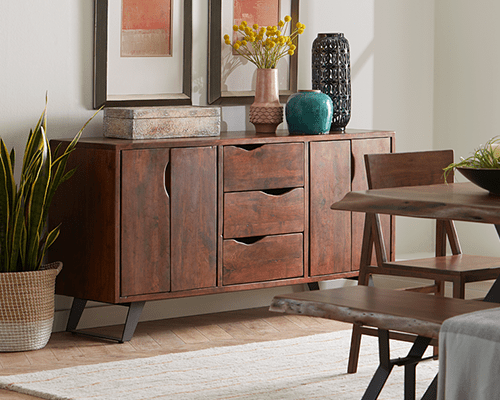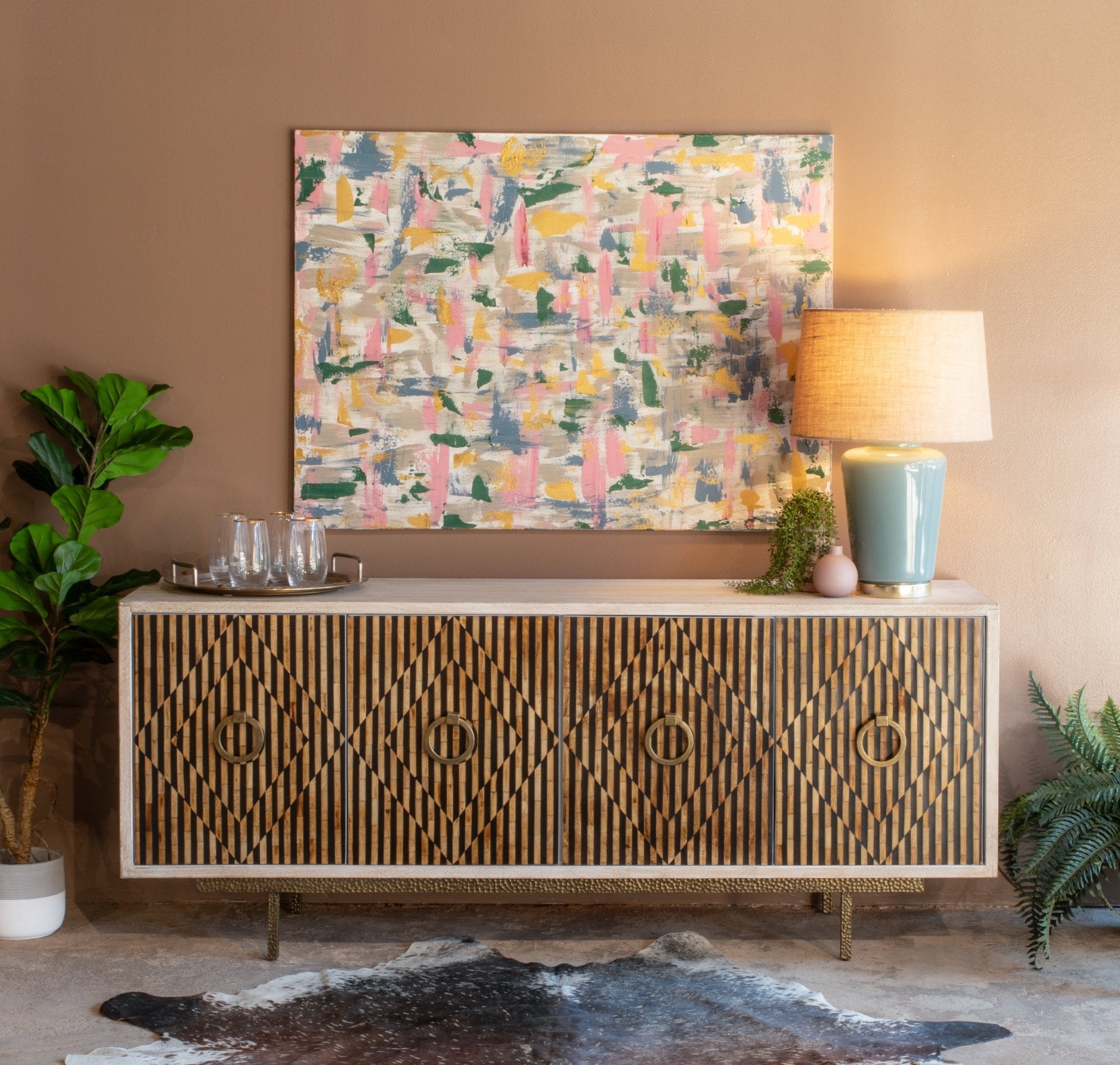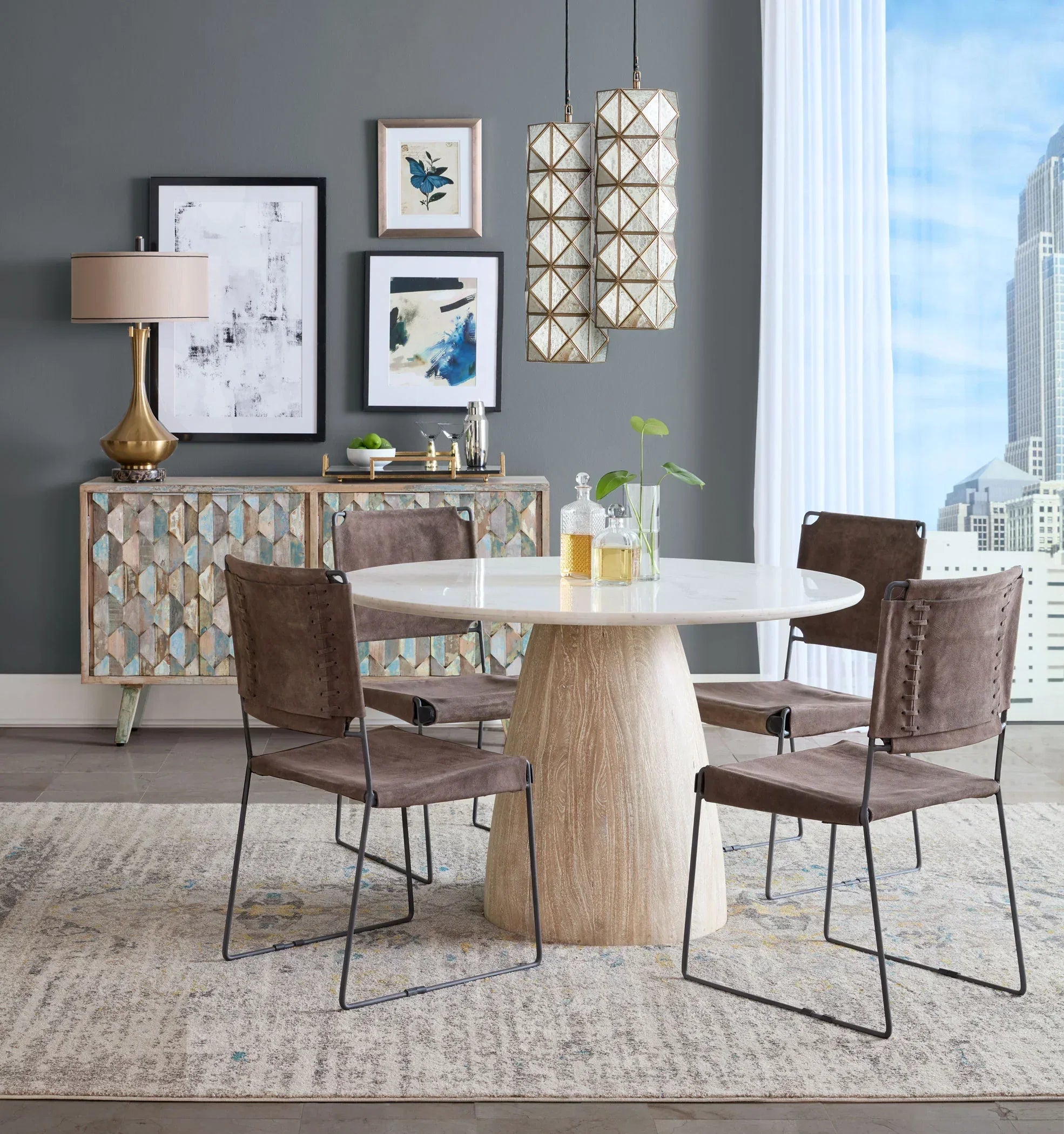With the holiday season right around the corner, it's time to update your dining room! We understand - it can be difficult to achieve that perfect space where every piece contributes to the cohesive whole. Take some of these tips into account, and you'll be setting up your dining space with the eye of a true designer.
Mid-Century Modern
Mid-Century Modern is a great option for those torn between traditional and contemporary; it's the middle-ground between the two! Incorporating a unique mix of organic curves and sleek lines with a variety of materials, this versatile style allows for ample creative freedom when designing your dining space.
This style works best with an open dining space. Mid century modern, much like contemporary dining, takes advantage of negative space to bring the airy concepts found in nature into the home.
To accentuate the negative space and the natural, organic lines, would be a dining table with a low-profile base.
Industrial Modern
If you're looking for something unique & multi-functional, Industrial Modern is a great stylistic choice. Defined by the re-purposing of various materials, Industrial Modern (AKA Industrial Chic) allows for some creative freedom in using non-traditional items in your space.

Recast iron and natural textures are your friend with this style. For a centerpiece, consider a piece akin to the Nottingham 94" Modern Live-Edge Dining Table. A table like this is quintessentially industrial modern due to its emphasis on the usage of durable, heavy duty materials.
Durability and functionality are paramount to this style, so it's important to choose accents to reflect that. For example, dining chairs like our Lund Dining Chairs. Featuring traditionally hardy materials, such as top-grain leather and iron are a sure-fire way to bring some industrial style into your dining space.
Organic
Organic style is the closest one can get to bringing the natural world into the home, well short of living in a treehouse. The key element of this style is the emphasis on live-edges - the natural edge of the wood. This results in unique shapes that reflect the life of the tree.
We recommend using solid wood as a focal point for this style. The grain patterns, color variations, and earthly shapes inherent in wood are a key element when styling in this manner.
Another important element to consider when using this style is the application of shapes - namely, curves. Curves reflect the shapes commonly found in the natural world - there are no perfectly straight lines found in nature.
Transitional
Transitional style marries traditional with contemporary. While transitional uses the classic lines of traditional style, the colors are usually more contemporary. Transitional style embraces soft lines and comfort without the fuss or ornateness of traditional styling.
This style offers a lot of freedom and flexibility when it comes to furniture choices. With a more transitional style, you can incorporate pieces from other styles to create a design that reflects your personality.
The main aspect of this style that should not be overlooked is scale. Take heed to not incorporate too many oversized pieces. Large pieces will overpower the focal point of the room - the dining table.
Coastal
One of the fastest growing design styles, Coastal design draws its influence from, as one might guess, coastal areas. There are a variety of coastal styles. Rooms decorated in coastal style are characterized by a sea of ocean hues, sun-bleached white decor and the incorporation of natural materials.
The central element of this style is the use of lighter, sun-kissed colors.
Typically, materials used are lighter and more open in nature - whether it be eclectic pieces like our Cordoba Collection or
Adjustable
If you love functionality, adjustable style is a great choice. The ability to alter the height of a table adds additional use to the piece. For those working from home and want a dining space that doubles as office space, this is the style for you.

A key element of this style is, of course, the adjustable pieces. We recommend utilizing pieces that display this functionality proudly with exposed gears to show the design at work-such as our collection of adjustable crank tables.
Typically, cast iron is paired with solid wood within this style. This serves two purposes - durability and, of course, aesthetics. Not only does this combination create a rough, industrial aesthetic, but also the materials themselves will stand the test of time.
Vintage
If 1950's Vintage Americana is more your style, consider modeling your space after retro characteristics. This style takes influence from popular designers throughout the 20th century, from Andy Warhol to the Eames couple. If you're feeling nostalgic about days long past, this style will surely quench that thirst.

Any references to past decades is generally suitable for this style - whether it's some pop art from the 80's or a retro-futuristic look like our Palm Desert Collection.
For colors, sticking to the neutrals and adding in vibrant accents is typically a good rule-of-thumb, but feel free to incorporate eye-catching colors, reminiscent of an Art Deco theme.
The Takeaway
No matter the style you're going for, don't be afraid to go against the grain and break some style rules! The design of a room is a reflection of one's perception of self. Don't feel like you have to follow any one style - mixing and matching can oftentimes culminate in a beautiful, unique space.














